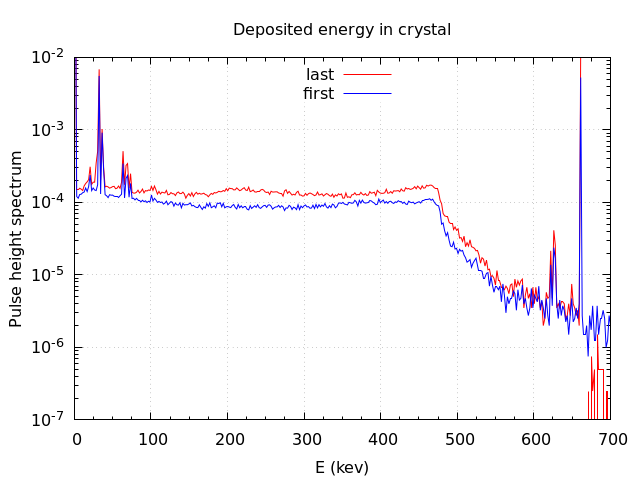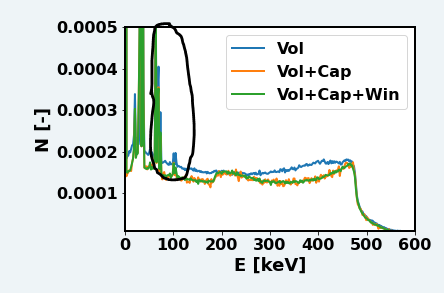Dear Jaroslav,
Thanks for this interesting problem!
Let’s focus on the 662-keV photons emitted from the source, which are the relevant players here.
Looking at their Compton-scattering kinematics, you’d indeed expect backward-emitted Compton photons to have ~182 keV, like you witness experimentally.
Two observations:
- Simulation-wise, as your source and geometry definitions stand, if you look with a USRBDX scoring at the (one-way) fluence of:
- photons going from your detector region (CRYSTAL) to the housing (COVER)
- photons going from your housing region (COVER) out (VAC)
you’ll indeed see the 182-keV onset (and in turn the 106-keV Compton backscattering onset from these 182-keV…, respectively indicated by the thick black lines):
So these near-182-keV photons are indeed produced in the detector/housing, but a fraction of them manifestly manage to escape.
- Looking at the deposited-energy / pulse-height spectrum with the DETECT card with “high” statistics (still not high enough…), you see an ever so mild hint that the 182-keV onset feature might be there (exaggerated scale deliberately chosen to highlight this otherwise very faint feature), but it’s essentially washed out in the background:
The latter two observations reveal that these near-182-keV photons produced by 662-keV photons undergoing Compton scattering in the detector/housing do not always lead to energy deposition in the detector: some escape, and those that manage to deposit their energy lead to a spectral feature that’s rather washed out in the background.
One is then led to believe that the ~182-keV feature you experimentally measure might have other contributions. (Part of) the culprit appears to be the fact that your simulated radiation source is essentially a point source in vacuum (for the present purposes air is essentially vacuum). Note that photons emitted in a direction pointing away from your detector simply leave the geometry.
Consider instead what would happen if you modeled more faithfully the source you have in the lab. It is not a point source (as in your simulation): instead it extends over a certain material volume and it is furthermore enclosed in some container/capsule (i.e. there are further materials surrounding the source).
In this new scenario, consider what would happen to a 662-keV photon emitted, say, along the negative z axis (away from the detector). Whereas before it would just exit the geometry, now it has the chance to undergo a large-angle Compton event (not in the detector, but in the volumetric radioactive sample itself or somewhere in the container/capsule), whereupon a ~182-keV photon would be emitted back towards the detector. Thus, not only 662-keV photons enter the detector: there’s now an additional net influx of near-182-keV photons (!).
I ran a crude preliminary test as a mere proof of concept:
- using a volumetric source (you’ll need an additional BEAMPOS card with, e.g., SDUM=CYLI-VOL, cross-check in the manual).
- assigning CESIUM to the DET1 region surrounding the source and ideally adapt to make sure that it encompasses the volumetric source. I put a few mm spatial extent, which is probably even too conservative (so the effect below might magnify if more realistic dimensions are chosen, and probably even further if the source capsule/container is added).
In such a scenario one sees the 182-keV feature start to pick up intensity in the energy-deposition spectrum:
Of course, the presence of the additional mass (volumetric source, and later when you add a capsule) also “Compton-scatters away” some of the 662-keV forward photons going into the detector, hence the drop in the deposited energy in the plot.
Anything else that enhances Compton backscattering will help. In particular, in your geometry you are missing the photomultiplier tube after your scintillator. If you add it in your geometry, you’ll have more material after the detector, giving 662-keV photons further opportunities to “Compton-backscatter”.
That’s as far as I got. It looks like at the very least you’ll have to refine the modelling of your source, container/capsule, and anything immediately after the detector.
Enjoy!
Cesc
PS: cheers to @vasilis who contributed to this initial digestion of the problem!
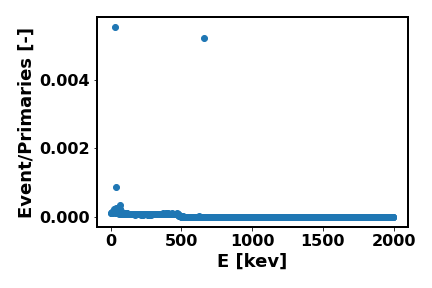
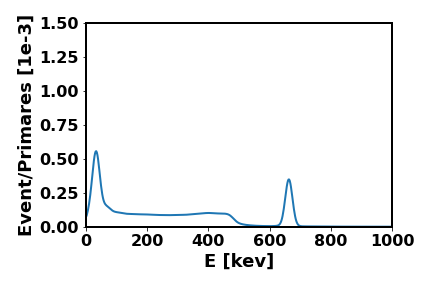
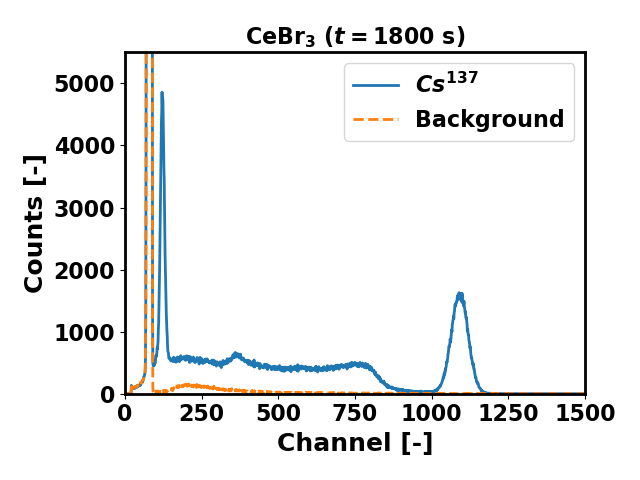 naive_detector.inp (2.8 KB)
naive_detector.inp (2.8 KB)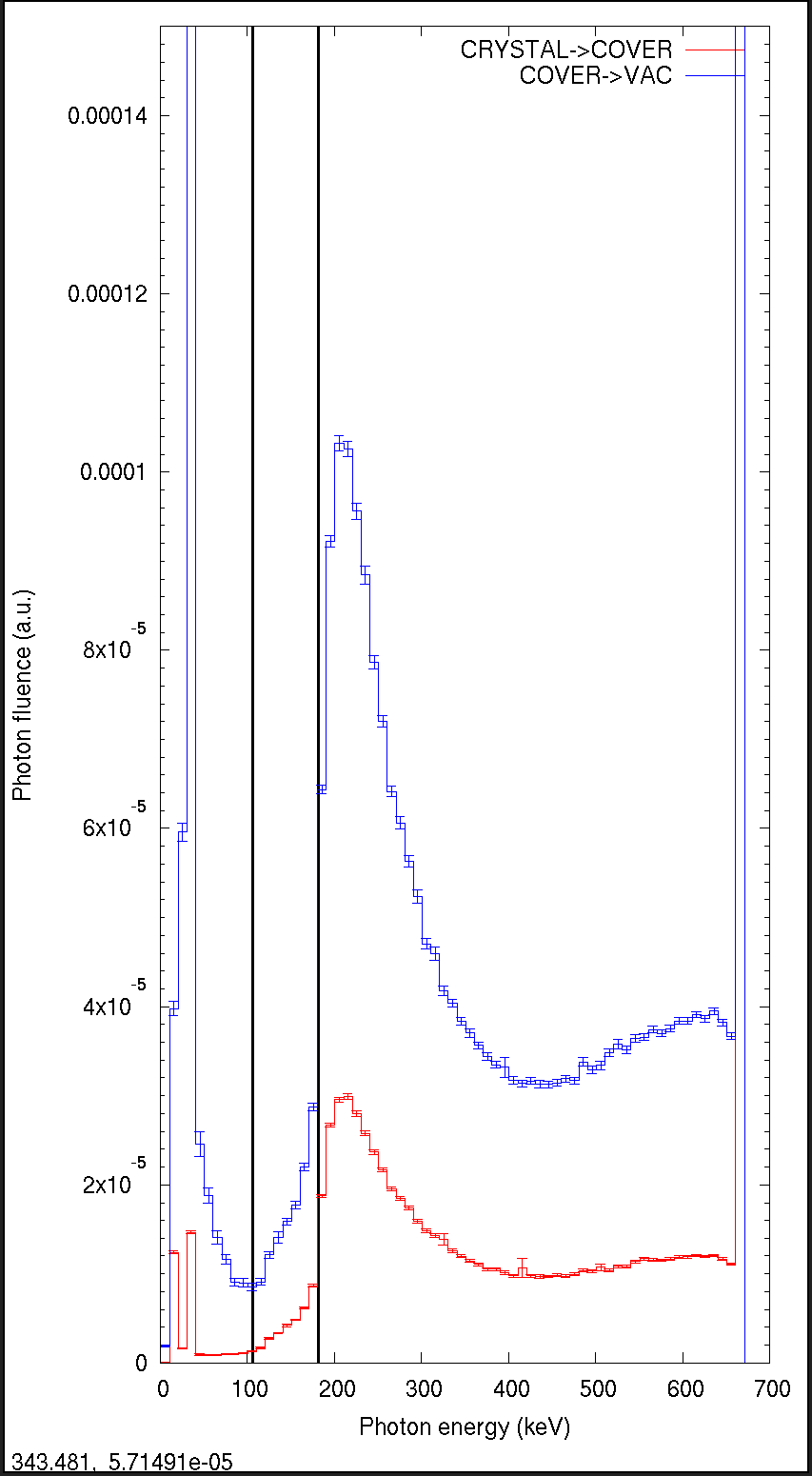
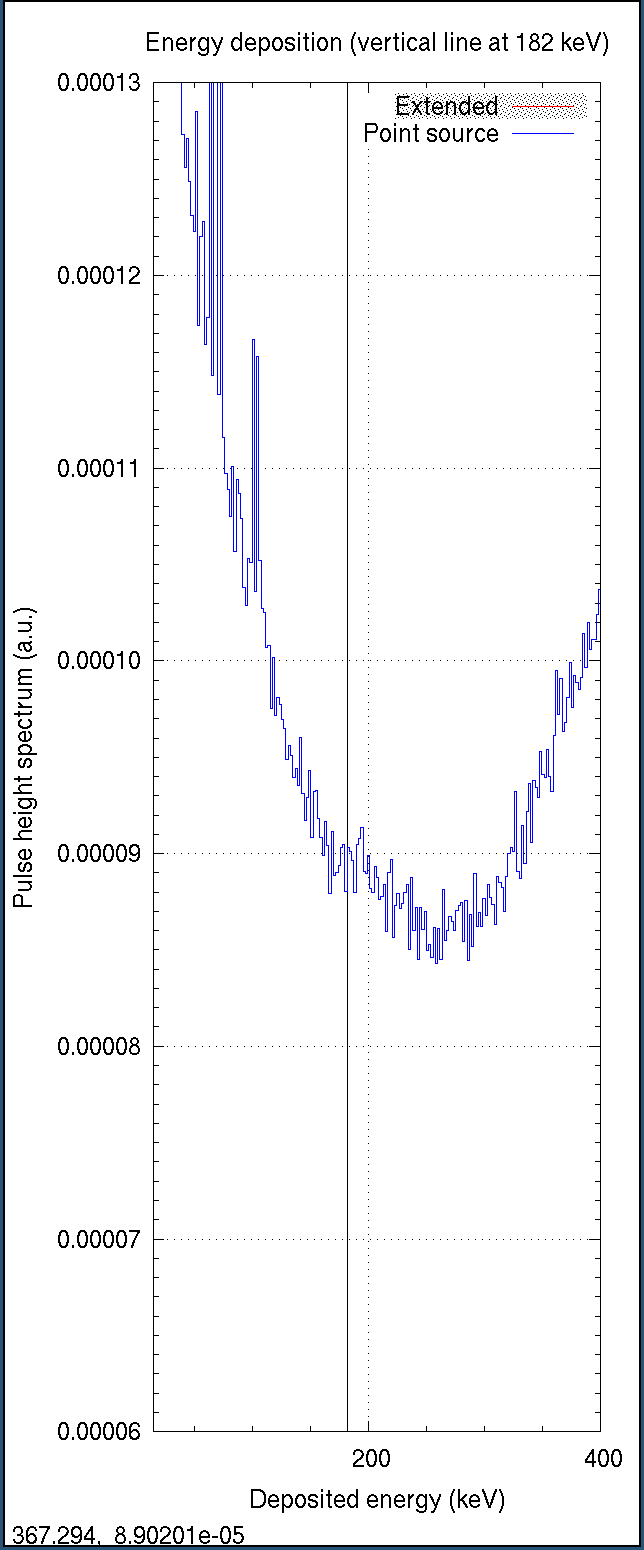
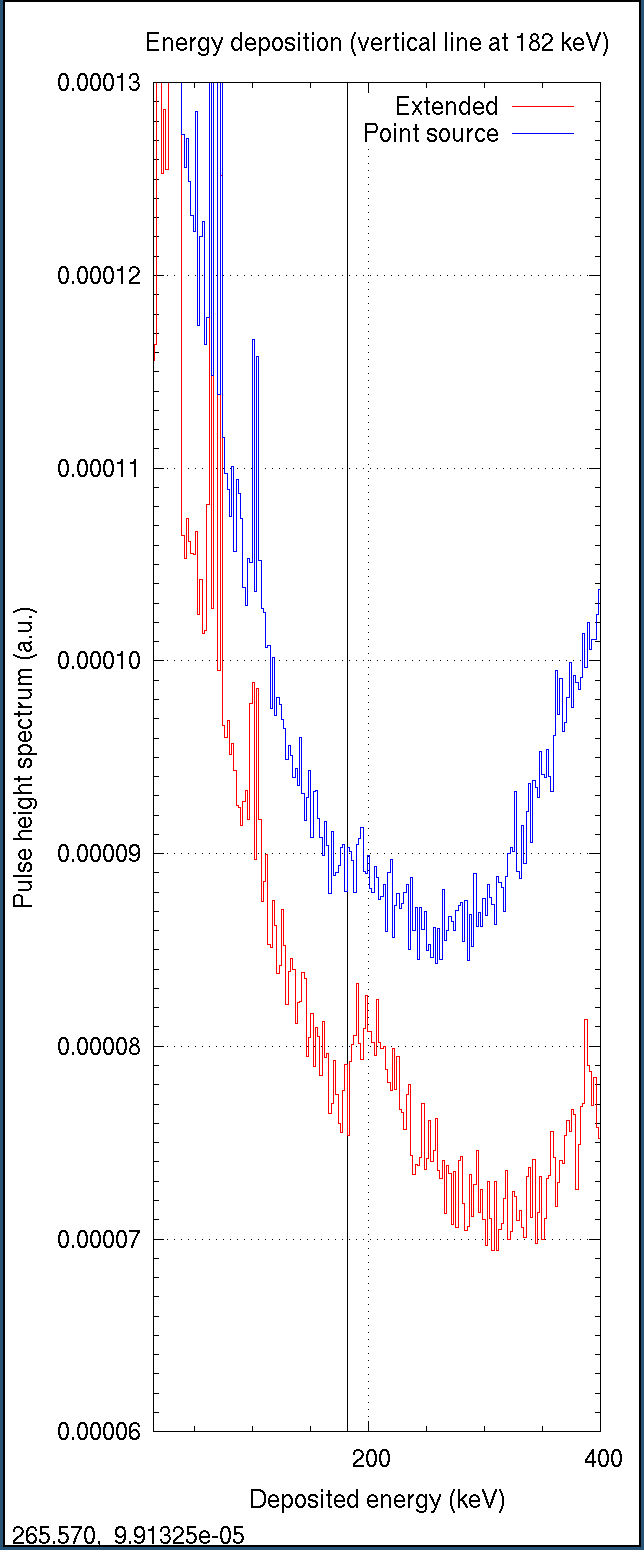


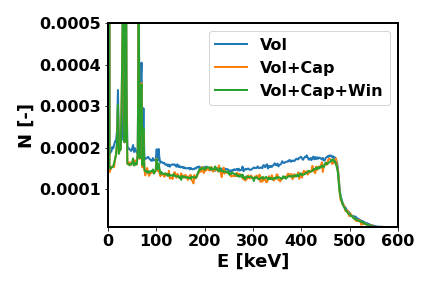
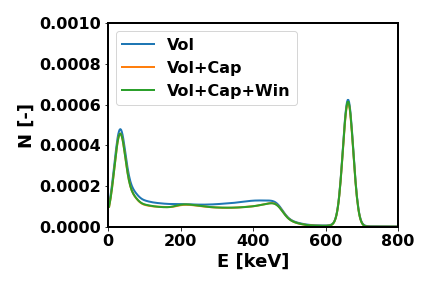
 . I will see, how it will match experimental results.
. I will see, how it will match experimental results.